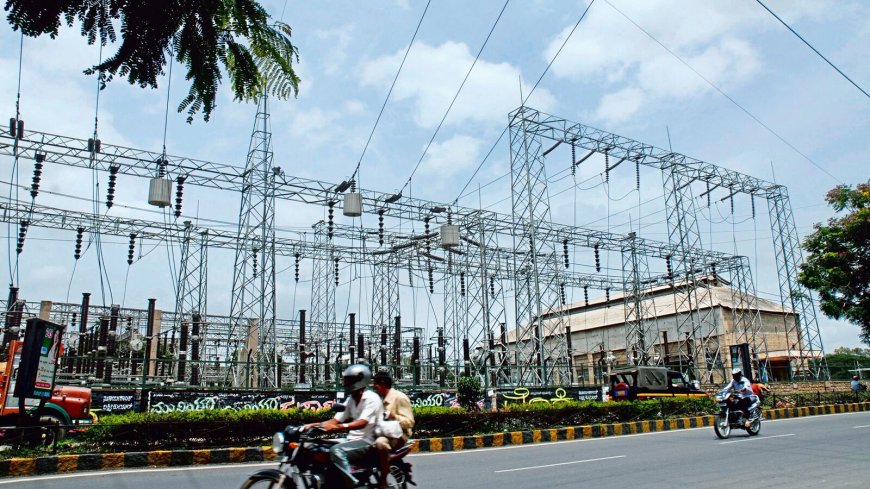IEX stock jumps on likely delay of market coupling; focus now on volume and pricing
IEX shares jumped over 6% on speculation that market coupling will be delayed. With regulatory risk easing, investor focus shifts to volume growth, pricing trends, and product innovation.

Mumbai, July 11, 2025 — Shares of Indian Energy Exchange (IEX) surged sharply in Thursday's trade as investors cheered the speculated delay in market coupling by the power ministry, which was previously seen as a near-term risk to IEX’s business model. The development, if confirmed officially, could offer a temporary breather for the exchange, allowing it to maintain its dominant position in the short-term electricity market and focus on expanding volumes and improving price realization.
Stock Reacts to Market Coupling Delay
IEX shares rallied over 8% intraday to touch a high of ₹161.50 on the NSE, before closing 6.4% higher at ₹158.20, supported by strong trading volumes. The stock has gained more than 20% in the last one month, fueled by rising power demand and growing clarity around policy-related uncertainties.
What is Market Coupling?
Market coupling is a proposed regulatory mechanism under which a central clearing entity would aggregate price and volume bids from all power exchanges to create a uniform market clearing price. The idea is to bring efficiency and transparency, but critics argue it could dilute IEX’s price discovery role, affecting its market leadership and earnings.
“The delay in market coupling is a key positive for IEX in the short term,” said Rahul Jain, Vice President, Systematix Institutional Equities. “It gives the company more headroom to expand its product offerings and increase participation without immediate regulatory disruption.”
Background: Controversy Over Market Coupling
Earlier this year, the Power Ministry and CERC (Central Electricity Regulatory Commission) were reportedly moving forward with the market coupling plan. However, multiple industry bodies, power generators, and even exchanges like IEX raised concerns over lack of consultation, potential monopolization of clearing roles, and risks to innovation.
With growing resistance, and after recent high-level meetings between regulators and stakeholders, the proposal is believed to be under review, leading to optimism that implementation could be deferred.
“This delay is not a rollback, but a signal that the government is open to feedback from stakeholders,” said Anshul Chaturvedi, energy sector policy analyst at JM Financial. “It’s a window of opportunity for exchanges like IEX to demonstrate added value through competitive innovation, better user interface, and market expansion.”
Volume-Led Growth Takes Center Stage
As the regulatory headwinds ease temporarily, investor attention is now shifting to core growth metrics — primarily volumes, market share, and pricing trends.
In the June 2025 quarter, IEX reported a 19% year-on-year rise in electricity volumes, largely driven by increasing demand from industrial consumers amid a hot summer and growing renewable energy integration. Day-Ahead Market (DAM) and Real-Time Market (RTM) continued to be strong performers, while the Green Day Ahead Market (GDAM) is also gaining traction.
“IEX remains a pure play on India’s short-term electricity trading growth,” noted Mehul Desai, energy analyst at Axis Securities. “Its strong tech backbone, deep liquidity, and first-mover advantage continue to support a positive structural story.”
Focus on Pricing Trends and New Products
Though volumes have been encouraging, price realization per unit has been volatile, depending on supply-demand dynamics and weather conditions. Analysts believe that as more states and industries adopt real-time and green power trading, price elasticity and diversity could improve.
Moreover, IEX is betting big on new product categories such as longer-term contracts, capacity markets, and possibly carbon trading. The company recently announced a strategic partnership with global firms to build a carbon exchange once enabling regulations are in place.
“Carbon credit trading could be a multi-billion-dollar opportunity,” said Suhas Kulkarni, energy sector advisor. “IEX has the potential to dominate this space if it plays its cards right.”
Financial Snapshot and Valuation Outlook
For FY24, IEX reported revenue of ₹482 crore and net profit of ₹296 crore, with EBITDA margins exceeding 75%. The company is virtually debt-free, boasts high return ratios, and has been a consistent dividend payer.
At the current price of ₹158, the stock trades at around 34x FY26E earnings, which some analysts view as expensive, but justified given the monopoly-like business model and asset-light operations.
“We see IEX as a long-term compounder in the power sector digitization theme,” said a recent report by ICICI Securities. “Valuations could stay elevated if policy stability is ensured and volume growth sustains above 15% annually.”
Risks to Watch
Despite the current optimism, regulatory uncertainty has not fully vanished. A formal announcement is awaited on the status of market coupling. Additionally, any adverse pricing trend due to seasonal demand contraction or increased competition from newer exchanges like PXIL could impact near-term earnings.
Moreover, power exchanges are heavily reliant on industrial demand, which remains sensitive to macroeconomic cycles and input costs like coal and gas.
Investor Outlook: A Power Play With Caution
The delay in market coupling gives IEX breathing room to reassert its strengths. With rising electricity demand, digital infrastructure upgrades, and green energy policies in place, the power trading ecosystem in India is likely to expand, offering tailwinds to IEX.
However, investors must remain cautious of regulatory recalibration and monitor key developments from the Ministry of Power and CERC in the coming months.
As it stands, IEX remains a strong long-term play on India’s evolving energy markets, but the path ahead may include intermittent policy-driven volatility.
What's Your Reaction?
 Like
0
Like
0
 Dislike
0
Dislike
0
 Love
0
Love
0
 Funny
0
Funny
0
 Angry
0
Angry
0
 Sad
0
Sad
0
 Wow
0
Wow
0













































































